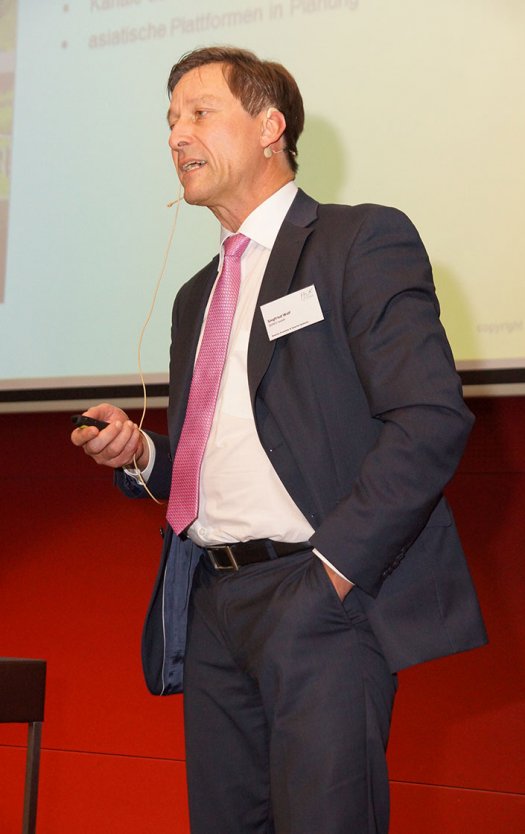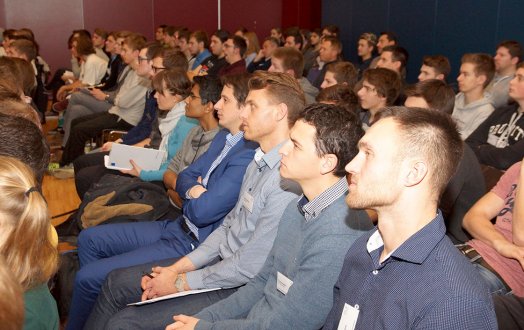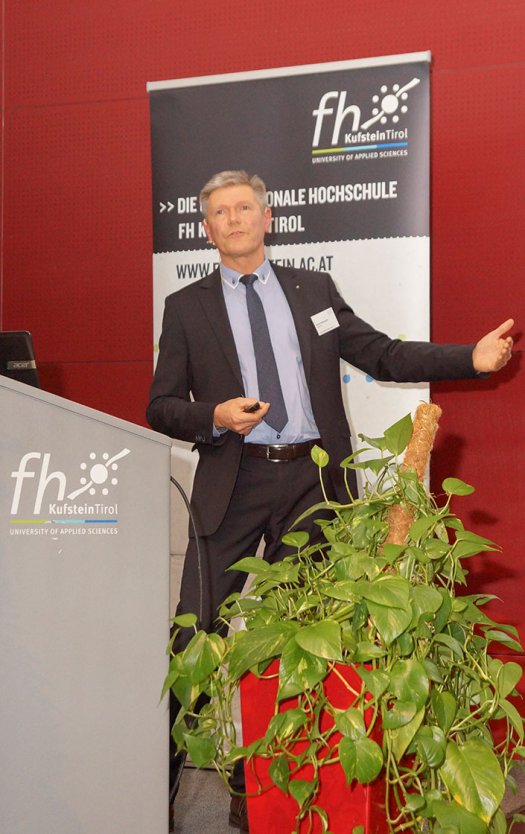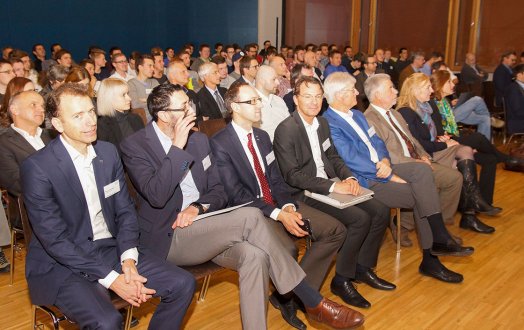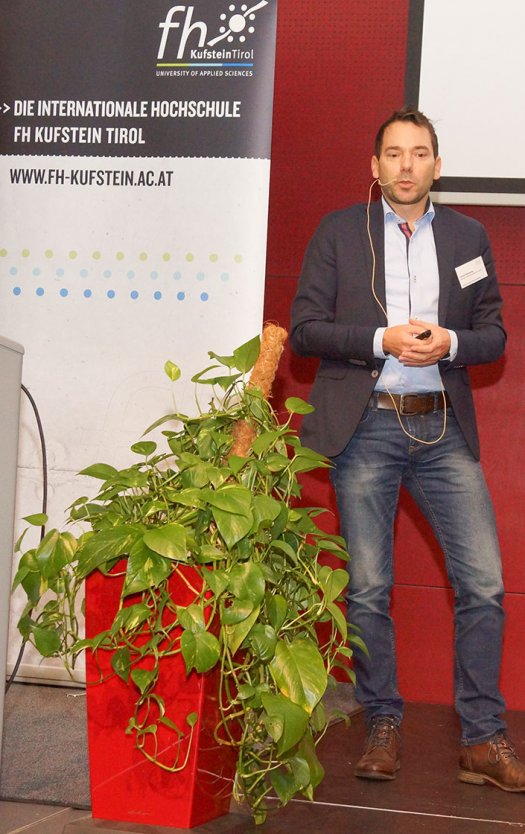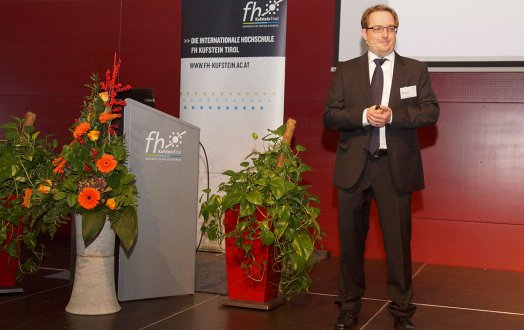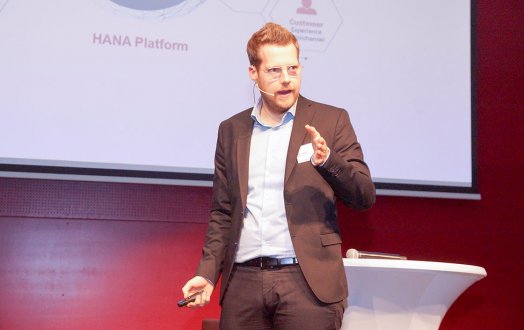
FH Kufstein Tirol hosted a successful conference about smart products and smart systems
With about 140 participants, the second event in this series on smart products and smart systems, which took place in the ceremonial hall of the FH Kufstein on November 25th, 2016, left no seat empty. Asc. Prof. (FH) Dr. Peter Affenzeller, who organized the conference and is Director of the Industrial Engineering study program, welcomed guests and speakers and illustrated the interconnection between the physical and the digital world. He used the opportunity to present the new Master's program Smart Products & Solutions which will be launched at the FH Kufstein in the 2017/2018* winter term. The program will have three main focuses: product creation, data generation and use, and the digital transformation of businesses.
Automated driving
Univ.-Doz. Dr. Daniel Watzenig from the Virtual Vehicle Research Center outlined in his presentation the challenges developers face in automated driving and the potential that lies in this field. He described different classifications according to SAE International and stated that continuous monitoring by the driver is still a necessity. Highly interesting aspects in this context are the different development paths of traditional OEMs and IT companies such as Google.
Benefits of such synergies include road safety, traffic volume response, reductions of emissions and car sharing. Data appeared to be the name of the game. About 1 gigabyte of data is generated in a fully equipped car – data that also needs to be processed and redistributed. The speaker concluded by saying that automated driving will first become a reality in structured environments such as highways. To achieve this, a number of challenges still need to be overcome.
Individual advertising with posters 2.0
Samuel Geisler from Peakmedia presented different ways to use dynamic content for the creation of posters 2.0. Digital signage in retail supports and contributes to aspects such as information, sales support, and shorter waiting times. Combining different data sets is an effective way to create added value in retail. This allows businesses to offer bespoke ads or sales support based on specific individuals or other purchasing criteria, factoring in aspects such as face recognition, geodata and temperature. This means that adverts for ice cream, for example, will only be published at certain outdoor temperatures, or advertising content may only go live based on facial recognition.
Magic Shoe – a groundbreaking working tool
Dipl. Ing. (FH) Bernd Hildebrandt from Sigmatek presented a revolutionary operating concept – the Magic Shoe. The Magic Shoe outsmarts conventional working shoes by using special sensor technology in the sole and a connector unit in the heel of the shoe as well as an energy supply battery. Replacing a manual footswitch with a Magic Shoe brings ergonomics to another level and increases productivity in the process.
There is more to SAP
In his presentation about SAP S/4 HANA, Mag. (FH) David Hable from SAP Austria showed how the digital core of a business responds and adapts to the challenges and requirements that our era of digitization and networking presents. What sounded somewhat dry at first proved to be a highly relevant and interesting topic. He explained how the new platform, which received the User Experience Red Dot Design Award, supports collaboration between companies, customer experience, asset management and employee engagement.
Using the platform, for example, John Deere, an agricultural machine developer, has been able to detect defects at an early stage and directly incorporate generated data into the development of new products. Moreover, maintenance intervals can be adjusted individually in the process. The German national soccer team also benefited from SAP's data analysis as it allowed the team to study and evaluate Lionel Messi's behavior. David Hable also discussed new business models. For example, forklift manufacturers can offer their services based on the weight that needs to be transported instead of selling their products as they conventionally do.
Targeted use of mass data
"Advanced analytics" was the title of a presentation by Siegfried Wolf from Qunis. He outlined solutions, trends and developments as well as challenges when it comes to analyzing mass data. After defining the terms "big data" and "advanced analytics", he demonstrated how results can be predicted and influenced. As an example, he used a smart home app to illustrate how users can remotely control their home heating, which allows user habits to be automated.
Participants used the coffee break and the get-together after the event to exchange ideas and experiences with the speakers and the organizer Asc. Prof. (FH) Dr. Peter Affenzeller.
*subject to AQ Austria accreditation
Information material on the individual presentations can be downloaded:
- Automated Driving – Challenges and Capabilities by Univ.-Doz. Dr. Daniel Watzenig, Virtual Vehicle Research Center
- Digital Signage im Handel by Samuel Geisler, Peakmedia GmbH & Co. KG
- Der „MagicShoe“ – Ein revolutionäres Bedienkonzept by Dipl. Ing. (FH) Bernd Hildebrandt, Sigmatek GmbH & Co KG. In addition a video by the orderer and producer of machine tools Trumpf on YouTube.
- Big Data & Advanced Analytics – Lösungsbeispiele, Trends und Herausforderungen bei der Datenauswertung von Massendaten by Siegfried Wolf, Qunis GmbH
